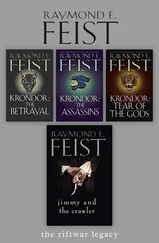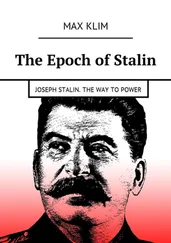In the contemporary world we must recognize the ever more widespread destruction of those conditions under which intellectual creation is possible… The regime of Hitler, now that it has rid Germany of all those artists whose work expressed the slightest sympathy for liberty, however superficial, has reduced those who still consent to take up pen or brush to the status of domestic servants of the regime… If reports may be believed, it is the same in the Soviet Union… True art, which is not content to play variations on ready-made models but rather insists on expressing the inner needs of man and of mankind in its time◦– true art is unable not to be revolutionary, not to aspire to a complete and radical reconstruction of society… We recognize that only the social revolution can sweep clean the path for a new culture. If, however, we reject all solidarity with the bureaucracy now in control of the Soviet Union it is precisely because, in our eyes, it represents, not communism, but its most treacherous and dangerous enemy… [77] Ibid.
The criterion for art given here by Trotsky seems more in the nature of Breton’s anarchism and of the future New Left than of the collectivist nature of Marxism. However, Trotsky, like the CIA and the wealthy American patrons of modernism, recognised the value of modernism as a method of subversion. F Chernov, whose important statement on the arts from a Stalinist viewpoint will be considered below, was to refer to such art as ‘nihilism’. Given that the manifesto was published in The Partisan Review , which was later to receive subsidies from the CIA, Trotsky’s theories provided the basis for the CIA’s ‘cultural cold war’, and for the modernist art movement that developed as an assault upon tradition with the eager patronage of ‘rootless cosmopolitan’ plutocrats such as the Rockefellers and Saatchis. [78] The Saatchi Gallery, London.
As Trotsky exhorted in his manifesto, this art is divorced from any cultural legacy or tradition, individualised and uprooted. There is no room for a national or ethnic culture, nor even the ‘proletarian◦– folk◦– culture’ that ‘socialist realism’ represented in Stalinist Russia, but only for cosmopolitan, nihilistic, hyper-individualised art-forms; what American conservative theorist Wilmot Roberston called ‘the atomisation of art’. [79] Wilmot Robertson, op. cit.
It is from this milieu that the CIA and the globalists recruited their agents and dupes to create their world cultural revolution.
Trotsky wrote Towards a Free Revolutionary Art as a call for mobilisation by artists throughout the world, an ‘Artists of the World Unite!’ Manifesto, to oppose on the cultural front Fascism and Stalinism, which to many Leftists and Communists are synonymous. Trotsky wrote:
We know very well that thousands on thousands of isolated thinkers and artists are today scattered throughout the world, their voices drowned out by the loud choruses of well-disciplined liars. Hundreds of small local magazines are trying to gather youthful forces about them, seeking new paths and not subsidies. Every progressive tendency in art is destroyed by fascism as ‘degenerate’. Every free creation is called ‘fascist’ by the Stalinists. Independent revolutionary art must now gather its forces for the struggle against reactionary persecution. [80] Leon Trotsky, Breton, Rivera, 1938, op. cit.
The two individuals who did most to promote Abstract Expressionism were art critic Clement Greenberg, and wealthy artist and art historian Robert Motherwell [81] ‘Motherwell was a member of the American Committee for Cultural Freedom’, the US branch of the Congress for Cultural Freedom; as was Jackson Pollock. Frances Stonor Saunders, op. cit., 276. Both Partisan Review editors Philip Rahv and William Phillips became members of the American committee of the CCF. Saunders, ibid., 158.
who was vigorous in propagandising on the subject. Greenberg was a New York Trotskyite and a long-time art critic for The Partisan Review and The Nation . He had first come to the attention of the art world with his article in The Partisan Review , ‘Avant-Garde and Kitsch’ in 1939, [82] Clement Greenberg, ‘Avant-Garde and Kitsch’, Partisan Review, 1939, 6:5 pp. 34-49. The essay can be read at: http://www.sharecom.ca/greenberg/kitsch.html
in which he stated that art was a propaganda medium, and equally condemned the ‘socialist realism’ of Stalinist Russia and the volkisch art of Hitler’s Germany, his criticism of Soviet art policy being consistent with the 1938 Trotsky manifesto.
Greenberg was a particular enthusiast for Jackson Pollock, one of the seminal figures of Abstract Expressionism, and in a 1955 essay ‘American Type Painting’ [83] Clement Greenberg, ‘American Type Painting’, Partisan Review, Spring 1955.
, he lauded Abstract Expressionism as the next stage of modernism. Greenberg considered that after World War II the USA had become the guardian of ‘advanced art’. On this basis Abstract Expressionism was adopted by the ‘Establishment’ and the CIA as a method of cultural subversion during the Cold War.
Greenberg became a founding member of the American Committee for Cultural Freedom (ACCF) [84] John O’Brien, ‘Introduction’, The Collected Essays and Criticism of Clement Greenberg , (Chicago: University of Chicago Press, 1993) vol.3, xxvii.
, and was involved with ACCF ‘executive policymaking’. [85] Ibid., xxviii.
Greenberg continued his support for the Congress for Cultural Freedom even after the exposé by the NY Times and Ramparts in 1966 of CIA sponsorship of the CCF and of influential magazines such as Encounter . Typical of a good Trotskyite, he continued to undertake work for the US State Department and the US Department of Information. [86] Ibid.
Congress for Cultural Freedom
Give me a hundred million dollars and a thousand dedicated people, and I will guarantee to generate such a wave of democratic unrest among the masses◦– yes, even among the soldiers◦– of Stalin’s own empire, that all his problems for a long period of time to come will be internal. I can find the people. Professor Sidney Hook, 1949. [87] Sidney Hook, 1949, quoted on the CIA website: ‘Cultural Cold War: Origins of the Congress for Cultural Freedom, 1949-50’; https://www.cia.gov/library/center-for-the-study-of-intelligence/kent-csi/docs/v38i5a10p.htm#rft1
Following the publication in The Partisan Review of Trotsky’s Towards a Free Revolutionary Art the Trotskyites set up an international artists’ association to build an anti-Fascist and anti-Stalinist movement among artists. This was called the FIARI (Fédération Internationale de l’Art Révolutionnaire Indépendant). The idea for what became the Congress for Cultural Freedom after World War II, for the purposes of mobilising artists and literati behind an anti-Stalinist movement, seems to have first been created by the Trotskyites of FIARI.
The Congress for Cultural Freedom (CCF) was formally established in 1951 after several preliminary moves. The CCF had its origins in the above-mentioned American Committee for Cultural Freedom which had been organised in 1938 by Prof. Sydney Hook. [88] Hook also served as a ‘contract consultant’ for the CIA. Saunders, op. cit., p. 157.
, Hook, a leading socialist intellectual who became an outspoken proponent of US foreign policy against the USSR, and received the Congressional Medal of Freedom from President Reagan for his services, edited The New Leader , a socialist periodical, with his mentor, Prof. John Dewey, founder of American ‘progressive education’, and head of the Fabian-socialist League for Industrial Democracy. Both had instigated the so-called Dewey Commission set up in 1938 as an ‘impartial enquiry’ (sic) to repudiate the Moscow Trials against Trotsky, Zinoviev, Kamenev, Bukharin et al. [89] Described by Carleton Beals, one of the Dewey Commission members who went to Mexico, ostensibly to cross-examine Trotsky as to the Stalinist allegations against him, as ‘Trotsky’s pink tea party’, and a contrivance to exonerate Trotsky. Beals resigned amidst much acrimony from the venerable Prof. Dewey et al, but the Dewey findings exonerating Trotsky continue to be cited as the final answer to Stalin’s accusations. Carleton Beals, “The Fewer Outsiders the Better: The Master Comes to Judgement,” Saturday Evening Post, 12 June 1937. http://www.revleft.com/vb/fewer-outsiders-better-t124508/index.html See: Chapter III, ‘The Moscow Trials’.
In 1948 Hook’s new group, Americans for Intellectual Freedom came to the attention of the Office of Political Coordination, a newly formed branch of the CIA, directed by Cord Meyer. [90] Meyer co-founded the United World Federalists with James Warburg,scion of the famous banking family, with the aim of promoting a World Government.
Meyer, an internationalist, became a bitter opponent of the USSR when Stalin dashed the utopian dreams of internationalists to establish a ‘new world order’ after World War II. [91] Chapter VI, ‘Origins of the Cold War’.
Meyer was responsible for recruiting Leftists such as Gloria Steinem and psychedelic drugs guru Timothy Leary for the CIA. [92] ‘Gloria Steinem and the CIA: C.I.A. Subsidized Festival Trips: Hundreds of Students Were Sent to World Gatherings’, The New York Times, 21 February 1967. http://www.namebase.org/steinem.html
Читать дальше












